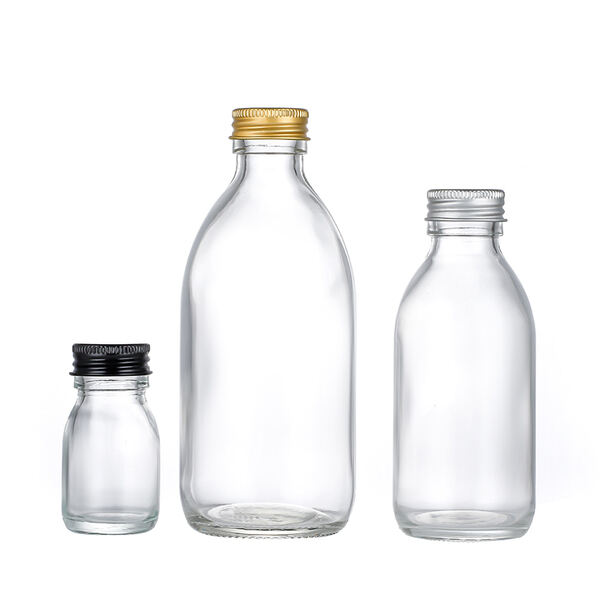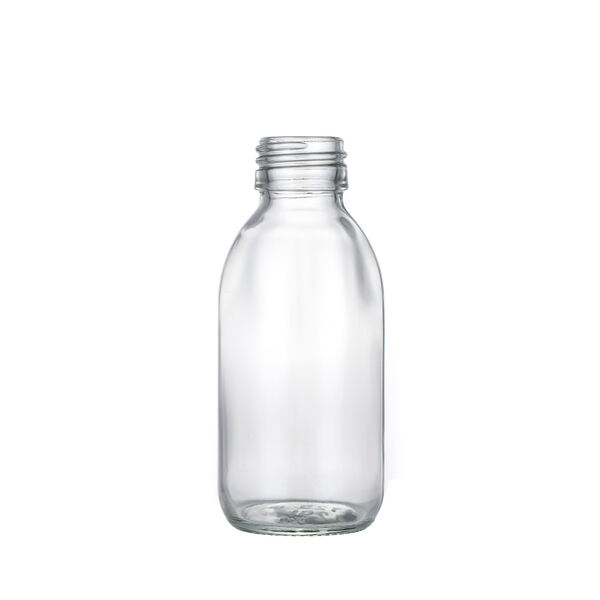Medicine Containers: A Guide to Choosing the Right One
Choosing the right medicine containers is more important than many people realize. These containers do more than just hold pills or liquids—they protect medications from damage, keep them organized, and ensure safe use. With so many options available, from basic pill bottles to specialized organizers, finding the best medicine containers for your needs can feel overwhelming. Whether you’re managing daily prescriptions, storing over-the-counter drugs, or caring for a loved one’s medications, the right containers make a big difference in safety and convenience. This guide breaks down everything you need to know to choose the perfect medicine containers for your home or lifestyle.
Why the Right Medicine Containers Matter
Medicine containers play a critical role in maintaining the effectiveness and safety of your medications. The wrong container can lead to expired drugs, mixed-up doses, or even contamination. For example, pills stored in a flimsy bag may break or get exposed to moisture, reducing their potency. Liquids kept in unmarked bottles could be mistaken for other substances, leading to accidental ingestion.
Good medicine containers also make it easier to stay on track with your medication schedule. When pills are organized and clearly labeled, you’re less likely to miss a dose or take the wrong amount. For caregivers, the right containers simplify managing multiple medications for others, reducing stress and errors. In short, choosing the right medicine containers is an essential part of responsible medication management.
Types of Medicine Containers for Pills
Pills are the most common form of medication, and there are several types of containers designed to store them safely and conveniently:
Prescription Bottles
The most basic type of medicine container is the standard prescription bottle provided by pharmacies. These are typically made of plastic, with a child-resistant cap to prevent accidental access. They come with printed labels that include the medication name, dosage, expiration date, and instructions. While functional, these bottles can be bulky, and their small print may be hard to read for some users. They’re best for short-term storage of a single prescription.
Pill Organizers
Pill organizers are ideal for anyone taking multiple medications daily. They come in various sizes, from small daily organizers to larger weekly ones with compartments labeled by day and time (e.g., “Monday Morning,” “Wednesday Night”). This helps you pre-sort doses, making it easy to track whether you’ve taken your medication each day. Many organizers have removable compartments, so you can take just the pills you need for the day when leaving home. Look for organizers with secure lids to prevent pills from spilling.
Airtight Containers
For medications sensitive to air or moisture (like certain vitamins or antibiotics), airtight containers are a must. These containers seal tightly to keep out humidity, which can break down pills over time. They’re often made of glass or thick plastic with rubber gaskets in the lid to create a secure seal. Airtight containers are also useful for storing pills in humid environments, such as bathrooms, where standard prescription bottles may not provide enough protection.
Childproof Containers
Safety is key when storing medications in homes with children or pets. Childproof medicine containers have special lids that require a combination of pressing and twisting to open—something young children find hard to do. Many prescription bottles come with childproof caps by default, but you can also buy standalone childproof containers for over-the-counter pills or supplements. Always opt for childproof options if there’s any risk of little ones accessing your medications.

Types of Medicine Containers for Liquids
Liquid medications, such as syrups, tinctures, and eye drops, require containers that prevent leaks and preserve freshness. Here are the main options:
Squeeze Bottles with Measuring Caps
Most liquid medications come in plastic squeeze bottles with a built-in measuring cap. These caps have marked lines to ensure you pour the correct dose (e.g., 5 mL or 1 teaspoon). The bottles are designed to be easy to squeeze, and their narrow openings help control the flow of liquid. They’re convenient for daily use but may not be ideal for travel, as they can leak if not sealed properly.
Dropper Bottles
Dropper bottles are used for liquid medications that require precise dosing, such as eye drops, ear drops, or oral tinctures. They have a small dropper attached to the lid, allowing you to measure exact drops. The bottles are often made of glass or plastic, with a tight-sealing cap to prevent evaporation. Glass dropper bottles are a good choice for light-sensitive liquids, as they block UV rays that can break down certain medications.
Pump Bottles
Pump bottles are useful for liquid medications that need to be dispensed in small amounts, like liquid pain relievers or topical creams. Each pump delivers a consistent dose, making it easy to measure without spills. They’re often made of plastic and have a secure lid to prevent accidental pumping when not in use. Pump bottles are especially handy for medications used multiple times a day.
Travel-Size Liquid Containers
For on-the-go use, travel-size liquid containers are essential. These are small (usually 3 ounces or less) to comply with airline regulations and have leakproof lids. They’re perfect for carrying liquid medications in purses, backpacks, or carry-on luggage. Look for containers with clear markings to track how much medication is left and durable materials to withstand being jostled.
Key Features to Consider When Choosing Medicine Containers
When selecting medicine containers, keep these important features in mind to ensure they meet your needs:
Size and Capacity
Choose a container that fits the amount of medication you need to store. For daily use, a small pill organizer or a single prescription bottle may be enough. For long-term storage or multiple medications, opt for larger organizers or storage boxes with compartments. Liquid containers should be sized to match your usage—too large, and the medication may expire before you finish it; too small, and you’ll need to refill frequently.
Durability
Medicine containers should be made of sturdy materials that can withstand daily use. Plastic containers should be thick enough to resist cracking if dropped. Glass containers are durable but may break, so consider ones with protective sleeves if you’re concerned about accidents. Lids should fit tightly and not wear out over time, as loose lids can lead to spills or exposure to air.
Ease of Use
The container should be easy to open and close, especially for those with limited hand strength or mobility. Childproof caps are important for safety but may be difficult for some users to open—many pharmacies offer “easy-open” caps as an alternative if needed. Pill organizers with clear lids make it easy to see if you’ve taken your dose, and liquid containers with large measuring marks are simpler to use correctly.
Labeling Options
Clear labeling is essential for avoiding mix-ups. Look for medicine containers that have space for labels, either on the lid, side, or a removable tag. Some containers come with pre-printed labels (like days of the week), while others allow you to write or stick on custom labels with medication names, dosages, and expiration dates. Waterproof labels are a good choice for containers stored in humid areas.
Special Needs
Consider any special requirements you may have. For example, if you travel frequently, look for portable, leakproof containers. If you take light-sensitive medications, choose opaque or dark-colored containers. For caregivers managing multiple people’s medications, color-coded containers (one color per person) can help keep things organized.
Tips for Organizing Medicine Containers at Home
Once you’ve chosen the right medicine containers, organizing them properly ensures easy access and safety:
- Store in a cool, dry place: Most medications should be kept away from heat, light, and moisture. Avoid storing medicine containers in bathrooms, as steam from showers can damage medications. A closet or cabinet in a bedroom is a better choice.
- Keep like medications together: Group prescription pills, over-the-counter drugs, and supplements in separate containers or sections of a storage box. This makes it easy to find what you need quickly.
- Check expiration dates regularly: Go through your medicine containers every 3–6 months and discard any expired medications. Replace old containers with new ones if they’re cracked, discolored, or no longer seal properly.
- Use a system that works for you: Whether it’s a weekly pill organizer, a labeled drawer, or a dedicated medicine cabinet, choose an organization system that fits your routine. The goal is to make taking medications as simple and error-free as possible.
FAQ
What’s the best type of medicine container for someone with arthritis?
Look for containers with easy-open lids, such as those with large, grippy surfaces or flip-top lids that require minimal pressure to open. Some pill organizers are designed specifically for arthritis sufferers, with extra-large buttons or magnetic closures.
Can I reuse prescription bottles for other medications?
Yes, but only if you thoroughly clean them first and relabel them clearly with the new medication’s name, dosage, and expiration date. Remove the original label to avoid confusion, and ensure the bottle is in good condition (no cracks or loose lids).
Are glass medicine containers better than plastic ones?
Glass is better for light-sensitive medications and is less likely to absorb odors or chemicals from medications. However, plastic containers are lighter, less likely to break, and often more affordable. Choose based on your needs—glass for sensitive drugs, plastic for portability.
How should I store liquid medications in medicine containers?
Store liquid medications in their original containers or leakproof travel containers. Keep them upright to prevent spills, and check that lids are tightly sealed after each use. Some liquid medications need to be refrigerated, so follow the instructions on the label.
What’s the safest way to dispose of old medicine containers?
Rinse out empty containers to remove any remaining medication. Remove or scratch out labels to protect your privacy. Most plastic medicine containers can be recycled if your local program accepts them. Check with your pharmacy or local waste management for guidelines on disposing of expired medications.
Table of Contents
- Why the Right Medicine Containers Matter
- Types of Medicine Containers for Pills
- Types of Medicine Containers for Liquids
- Key Features to Consider When Choosing Medicine Containers
- Tips for Organizing Medicine Containers at Home
-
FAQ
- What’s the best type of medicine container for someone with arthritis?
- Can I reuse prescription bottles for other medications?
- Are glass medicine containers better than plastic ones?
- How should I store liquid medications in medicine containers?
- What’s the safest way to dispose of old medicine containers?

